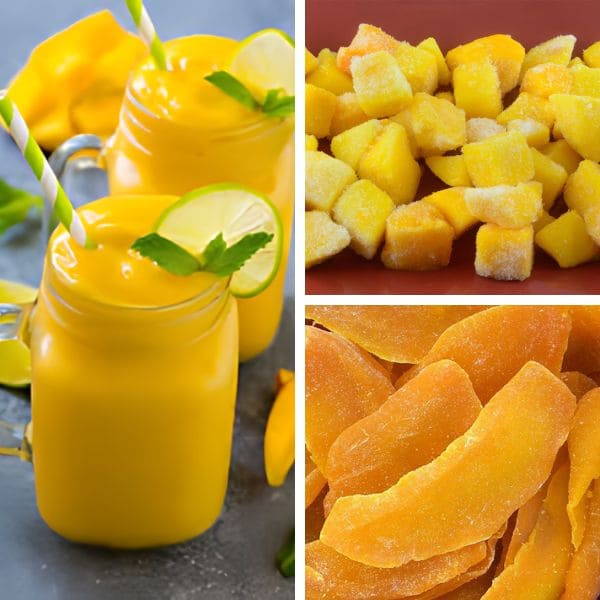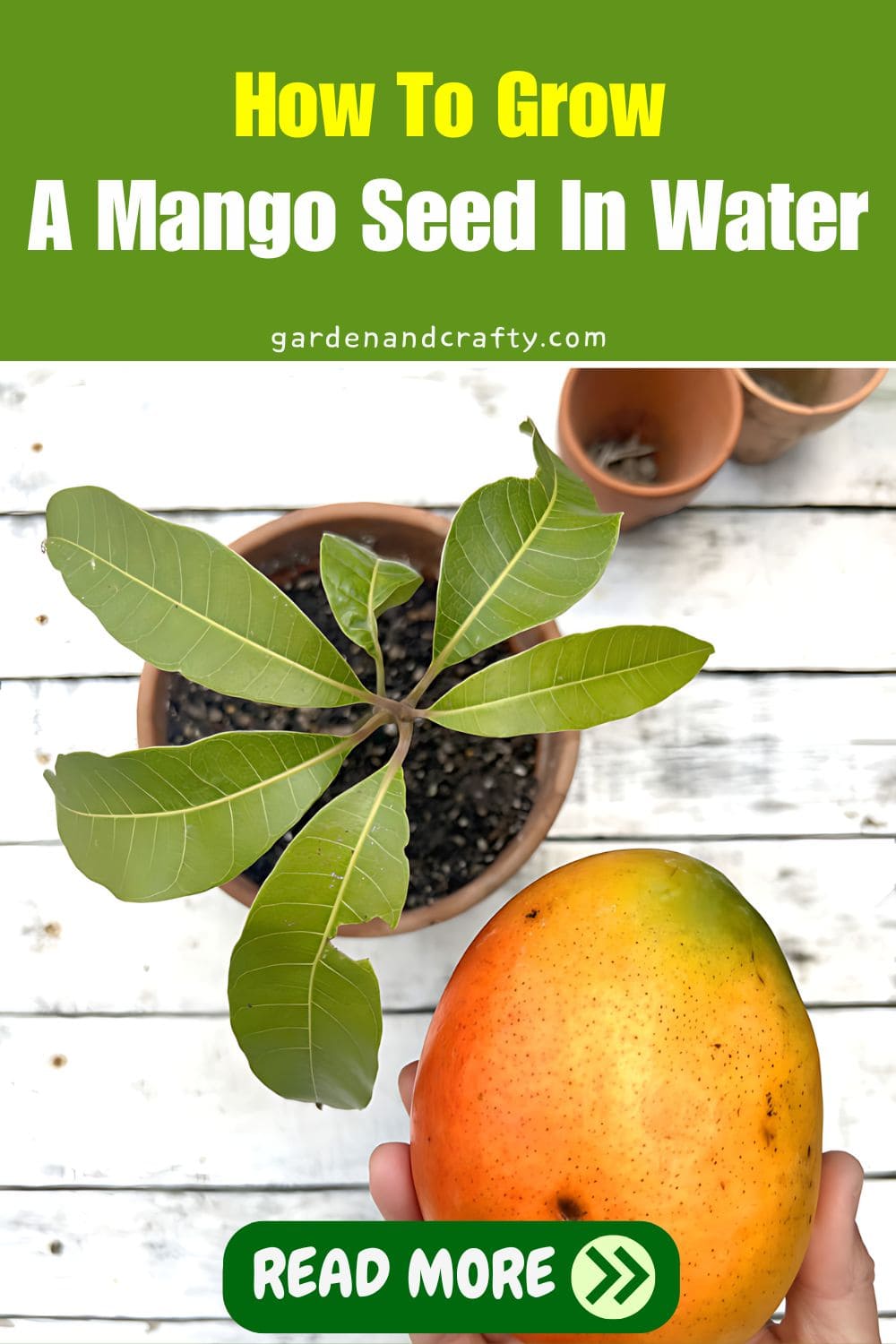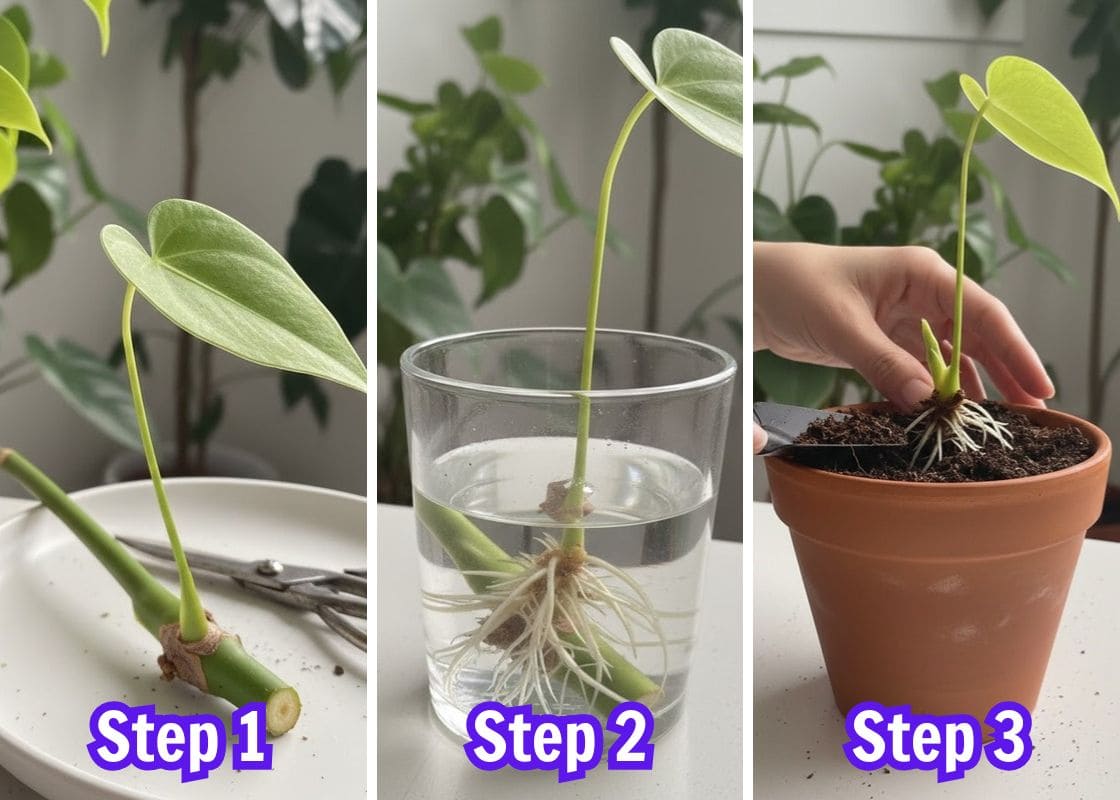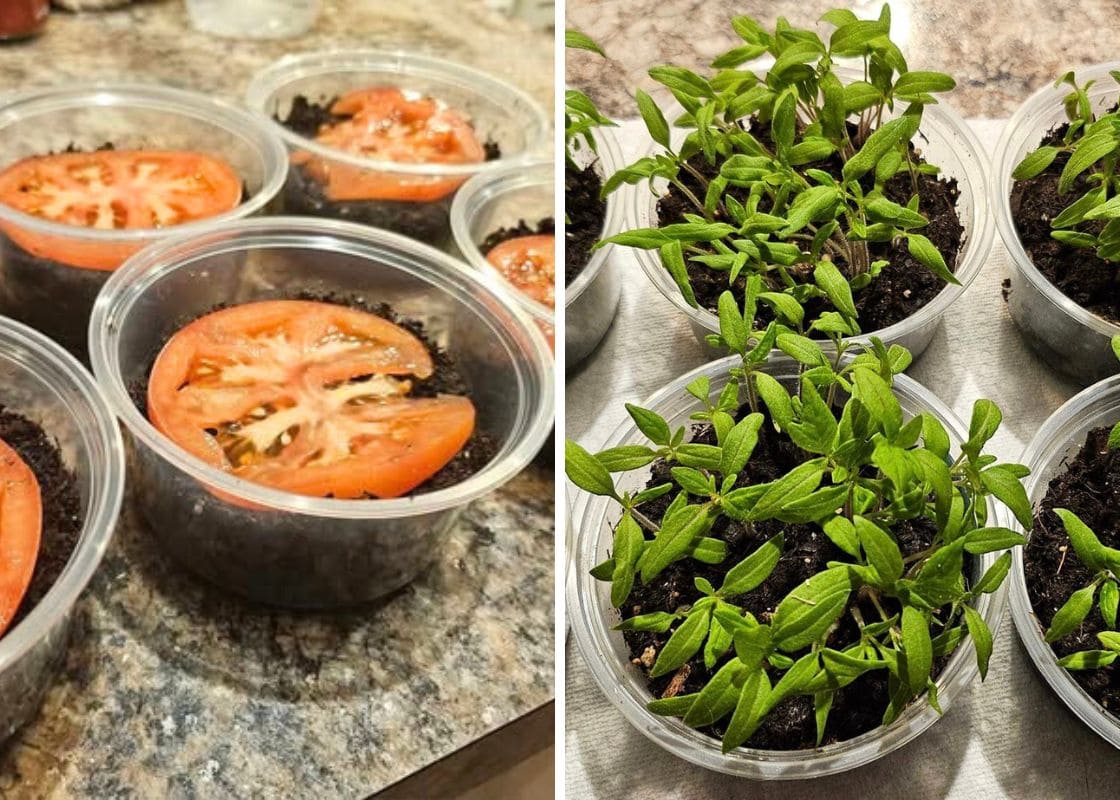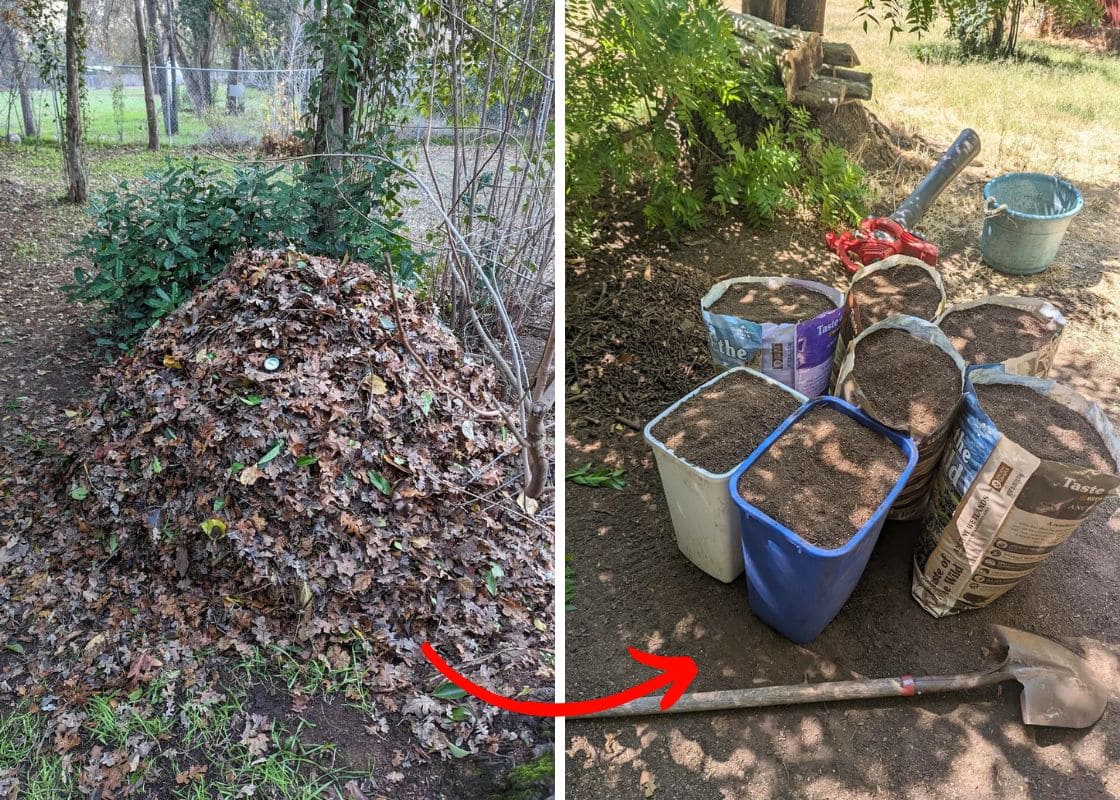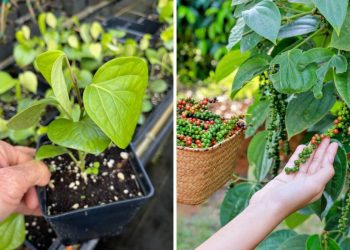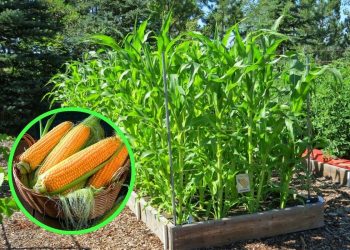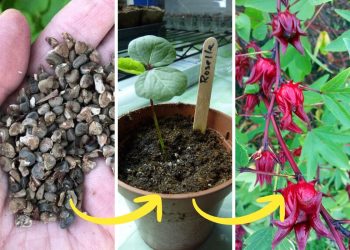Ever wondered what to do with that mango seed once you’ve enjoyed the fruit? Turns out, it’s the start of an exciting journey growing your own mango tree.
Despite its initial challenges, nurturing a mango seed in water is a rewarding experience.
Whether you choose to do it indoors or outdoors, it’s a delightful mix of patience and fascination.
With adequate sunlight and care, your mango seedling will thrive, promising future harvests of delicious fruit.
Summary:
- Clean and dry a viable mango seed, remove its outer shell, and submerge it in water (pH 5.5-7.0, temperature 75-85°F).
- Place the seed in indirect sunlight and monitor for root and shoot growth. Transplant to soil when the seedling is about 6 inches tall.
- Ensure full sun (6-8 hours daily), regular watering, and a warm environment (70-90°F). Prune and fertilize to support healthy growth and fruiting.
| Botanical Name | Mangifera indica |
| Common name | Mango |
| Family | Anacardiaceae |
| Plant Type | Perennial |
| Height | Up to 100 feet tall |
| Sunlight | Full Sun |
| Soil | Well-drained, sandy, loamy soil |
| pH | 5.5 to 7.5 |
| USDA | 10-11 |
| Native Area | South Asia (India, Bangladesh, Myanmar) |
Preparation
Types of Mango
When choosing a mango variety for water germination, consider smaller dwarf varieties for limited space. Here are suggestions for you:
- Palmer (6-8 feet): This dwarf mango variety boasts a compact size and abundant fruit production.
- Irwin (8-10 feet): With its sweet, fiber-free flesh and moderate height, Irwin mangoes are excellent candidates for water germination.
- Nam Doc Mai (6-8 feet): Originating from Thailand, Nam Doc Mai mangoes are prized for their exceptional flavor and compact tree size.
- Ice Cream Mango (8-10 feet): The Ice Cream Mango variety produces creamy, smooth-textured fruit with a hint of vanilla flavor.
- Cogshall (8-10 feet): Known for its delicious, fiberless fruit and moderate height, the Cogshall mango is an excellent choice for water germination.
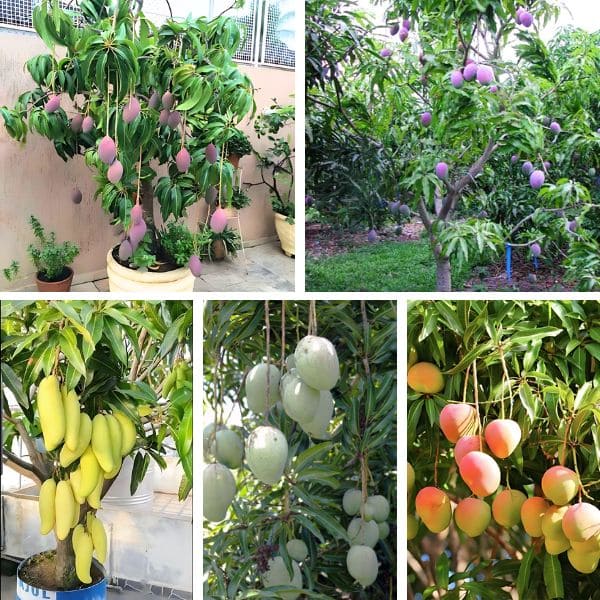
Mango Seed
You need to look for a viable seed obtained from a healthy, ripe mango, then carefully remove the flesh surrounding the seed to locate the seed husk within.
Once the seed is exposed, cleanse it thoroughly to eliminate any remaining flesh.
You should let the seed air-dry in a dry area for a day and a half, ensuring a consistent temperature during this time.
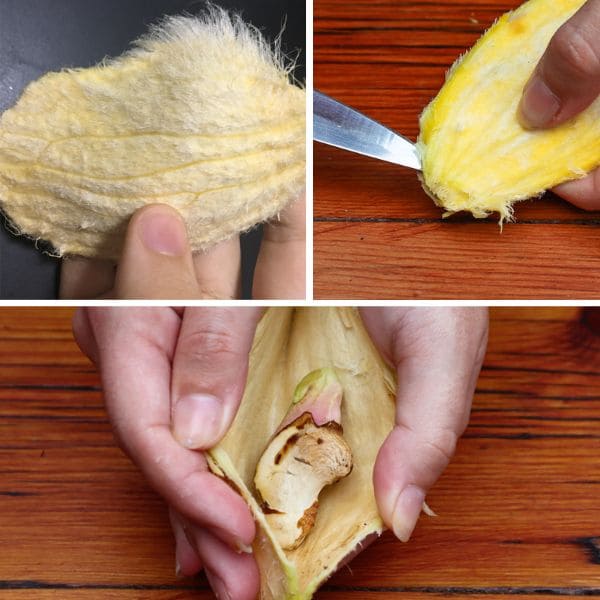
In the next step, you need to remove its hard, woody outer shell by using a knife, taking care to follow the ridge along the edge of the shell for assistance.
If needed, sandpaper can be used to help achieve a smooth surface but ensure it retains a tan and fresh appearance.
Besides, note that your seeds can shrivel up and turn grey as well as not germinate if they are expose to prolonged cold temperatures.
Water
You should check the water pH using a pH testing kit. Mango seeds thrive in slightly acidic to neutral conditions, ideally with a pH range of 5.5 to 7.0.
If the pH is off, adjust it with pH-up or pH-down solutions from gardening stores.
Ensure the water temperature is between 75°F to 85°F (24°C to 29°C) for seed germination. Avoid extreme temperature fluctuations, as they can hinder growth.
I recommend using a clean container or jar filled with filtered or distilled water. Tap water may contain chlorine or other additives harmful to the seed’s development.
Growing A Mango Seed In Water
Firstly, place the prepared seed in a container of water, with the pointed end down and the rounded end up to help the seed absorb water and start germination.
You need to maintain the water level to keep the seed submerged without overfilling, as too much water can drown it.
I recommend putting the container in a warm, well-lit area with plenty of indirect sunlight since mango seeds need warmth and light for successful germination.
Over the following weeks, you should monitor the seed closely for signs of growth.
Look for a small crack in the shell, which indicates germination has begun, followed by a tiny root from the bottom and a shoot from the top of the seed.
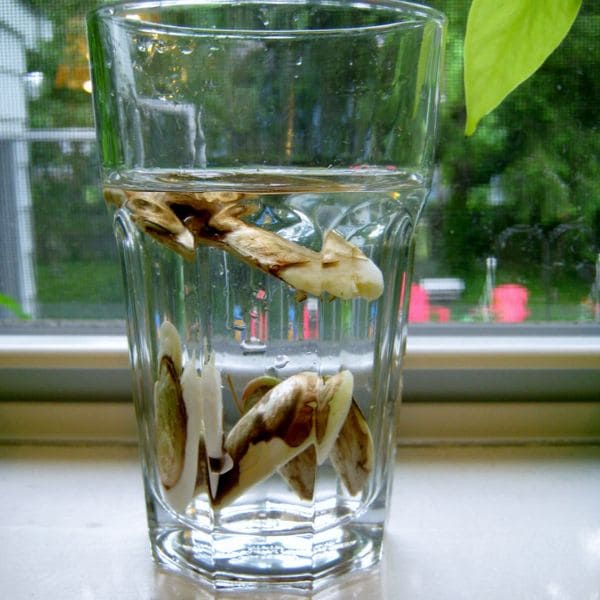
Once the root and shoot have grown to about 6 inches in height, you consider transferring the seedling to soil.
Then, dig a hole twice the size of the root ball and plant the seedling with the root facing downward, water lightly, and provide sufficient sunlight.
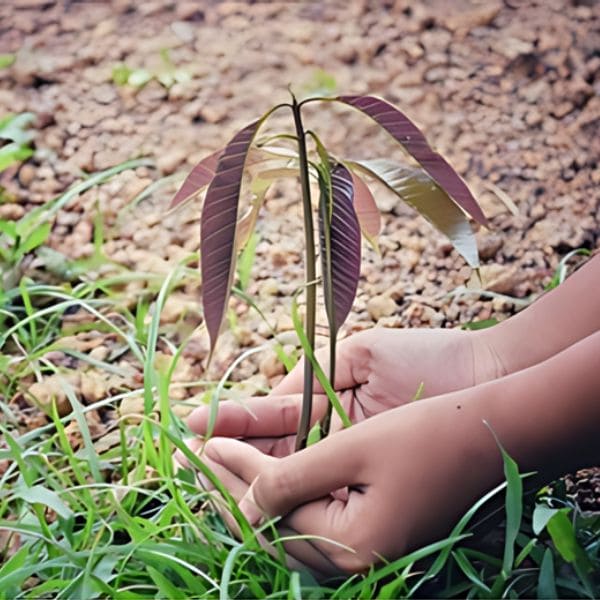
Care for Mango Plant
Here are main requirements for you to care for a mango plant:
- Thrive in full sun with 6-8 hours light per day.
- Grow in well-draining soil with pH 5.5-7.0.
- Prune regularly in their initial 2-3 years.
- Maintain temperatures within the range of 70-90°F (21-32°C).
Light
You need to provide indirect sunlight when caring for mango seeds in water, positioning them near a sunny window or under a grow light.
Ensure full sun 6-8 hours per day for transplanted seedlings, maintaining warmth and light to support healthy growth and fruit production.
Soil
You should ensure the soil is well-draining, rich in organic matter, and maintains a pH level between 5.5-7.0.
Proper soil conditions promote healthy root development and growth, essential for robust mango trees.
Water
It’s important to monitor soil dryness, irrigating when the top 2 inches are parched. When tending to transplanted mango trees, water 9-12 litre per day.
But when roots mature, you need to adjust watering frequency, aiming to water thoroughly so excess drains out.
Temperature and Humidity
You should keep temperatures within the range of 70-90°F (21-32°C) and humidity levels around 50-60%.
As tropical trees, mangoes require protection from cold drafts and frost. Consistent warmth and humidity nurture their optimal growth and fruit production.
Pruning
In their initial 2-3 years, you need to prune young mango trees regularly. Once surpassing 1.0m in height, trim them down to 0.6-0.7m, including horizontal branches.
Besides, remove dead or diseased branches, improve air circulation, and shape the canopy for optimal sunlight exposure.
Then, conduct pruning in late winter or early spring to promote healthy growth and fruit production.
Fertilizer
Your mango tree needs a balanced fertilizer with a formulation like 6-6-6 or 8-3-9 with essential nutrients for healthy growth.
You apply fertilizer every 2-3 months during the growing season, starting in early spring and continuing through summer.
You also need to avoid excessive nitrogen, especially during flowering to prevent vegetative growth at the expense of fruit production.
Additionally, incorporate organic matter into the soil annually to enrich its fertility and support robust growth and fruiting.
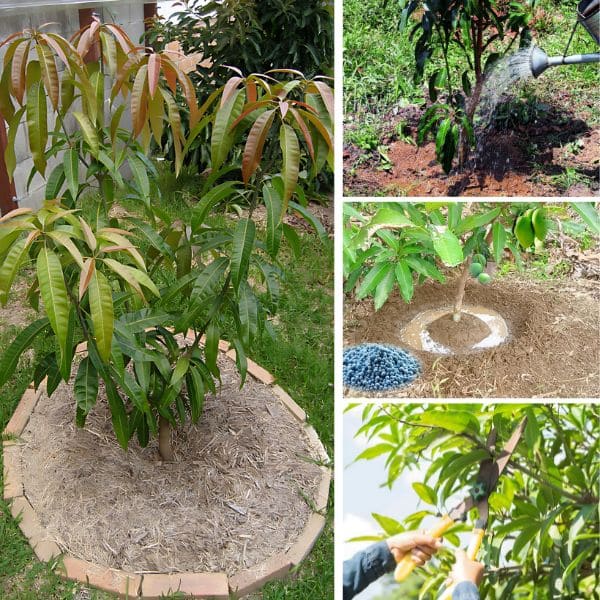
Pests and Diseases
Mango plants face various threats from pests and diseases, including powdery mildew, fungal leaf spot, mites, aphids, and mealybugs.
Powdery mildew manifests as a powdery white substance on leaves, while fungal leaf spots cause dark lesions.
Besides, mites, aphids, and mealybugs feed on plant sap, leading to leaf curling and distortion.
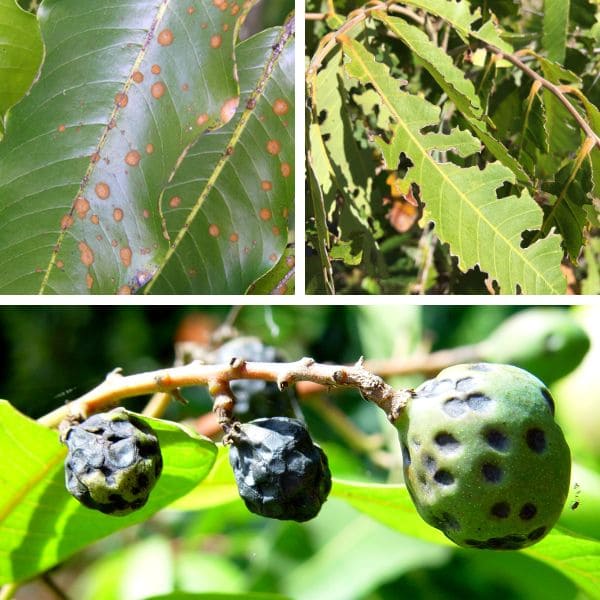
Regular monitoring and swift intervention with pesticides or organic solutions are vital for preserving mango plant vitality and productivity.
You should implement cultural practices like proper pruning and irrigation further fortifies to manage these threats.
Common Problems
Growing mango plants takes a lot of time, so facing common problems is compulsory.
No Germination
To prevent your mango seeds from failing to germinate in water, ensure the seeds are viable and healthy before attempting germination.
Next, you need to adjust water temperature to around 75-85°F (24-29°C) and maintain soil pH levels between 5.5-7.0.
In addition, you can consider using a germination aid like gibberellic acid to stimulate sprouting.
Leggy Growth
Overwatering can lead to root rot, where the roots become waterlogged and suffocate, resulting in stunted growth or seedling death.
As a result, you need to ensure the water level is appropriate, allowing the top inch of soil to dry out between waterings.
Leaf Droop
Overwatering or underwatering can cause your mango’s leaf droop, indicating stress.
You should provide consistent watering and enrich soil with magnesium and potassium to strengthen leaves and support photosynthesis.
Harvest
After 2-3 years you can harvest dwarf varieties.
When the fruit develops a rich color, fragrant aroma, and yields slightly to gentle pressure, use pruning shears to cut the stem, leaving a short portion attached to the fruit to minimize damage.
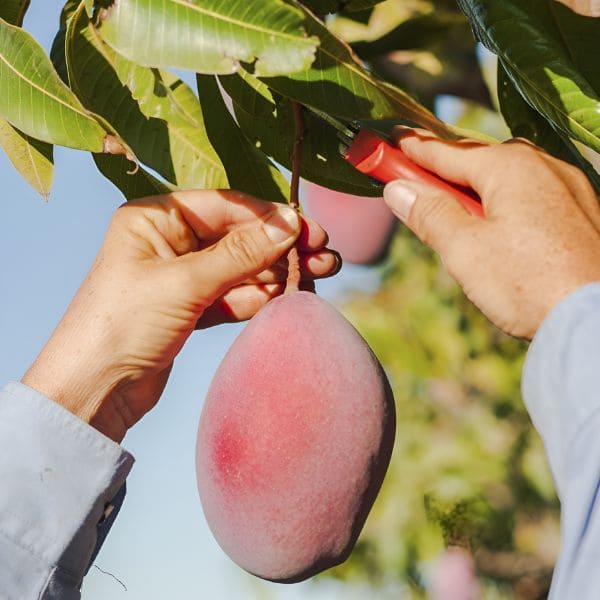
Preservation
After harvest you can enjoy fresh mango fruits. Additionally, consider freezing mango slices or puree for later use in smoothies, desserts, or sauces.
You can also dry mango slices for a chewy, sweet snack, or canning mango slices in syrup for long-term storage.
